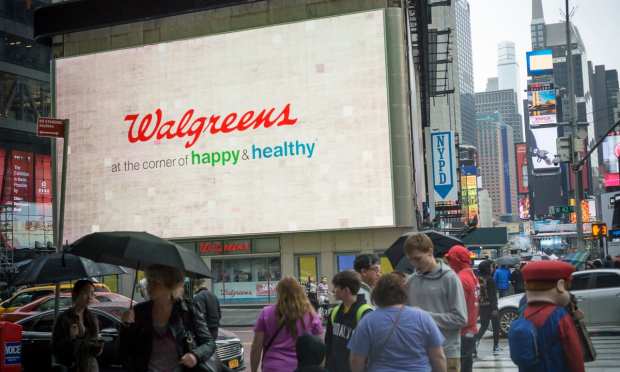Walgreens Follows Amazon And Walmart Into The Retailer-as-Ad-Agency Trend

The hot new thing in “Big Retail” is offering in-house advertising on your website to your vendors – because why get paid only once on a purchase if you can get paid twice?
In announcing the launch of the Walgreens Advertising Group this week, the giant pharmacy chain said that with the help of more than 9,000 stores and 100+ million loyalty members, it would use “advanced data modeling” to connect brands directly with audiences in a digital ecosystem that “surpasses the industry method of digital media buying.”
What that means for Walgreens and other mega-retailers like Walmart and Amazon (which are already using similar double-dipping technology) is that when a customer is browsing in-store or on a website, a soft drink company could present them with an on-the-spot ad that would presumably lead to increased purchases.
In short, retailers get paid to place the ad, and then get paid again when the merchandise is sold.
“We have an unparalleled insight into consumers’ needs and shopping preferences,” said Luke Kigel, vice president and head of the Walgreens Advertising Group. He said that by unlocking the power of its first-party data, Walgreens “can help brands accelerate ROI by delivering relevant and personalized experiences to their highest-value consumers.”
To meet the data requirements of increasingly discerning brands, Walgreens highlighted a “Programmatic Demand Side Platform” (DSP) that would provide “SKU-level real-time optimization based on daily transactions,” as well as “closed-loop measurement of customers’ end-to-end shopping journeys.”
The Digital Embrace
This new venture marks the latest move by Walgreens to deepen its digital footprint and drive sales both in-store and online.
After recently reporting a 29 percent drop in Q3 revenue at the Walgreens Boots Alliance, the company announced it was accelerating a digital transformation, including the relaunch of its loyalty program. WBA has also been piloting in-store advertising on the glass doors of its chilled and frozen foods section via a partnership with ad-tech startup Cooler Screens.
And it’s not just Walgreens that’s getting into the advertising game. In July, Walmart reportedly cut ties with its external advertising partner and brought the entire digital operation in-house. While still young, the earnings potential of the newly formed Walmart Media Group, which places ads targeted at customers in 4,700 stores, is undeniable.
And never to be outdone, online retailing titan Amazon reportedly saw a 51 percent jump in advertising revenue last quarter, adding an additional $5.4 billion to a total sales pot that came close to breaching $100 billion for the three months ending Sept. 30.
Enormous Potential
Whether it’s Walgreens, Walmart, Amazon or any other mega-retailer that decides to follow suit, it seems clear that the dual-income potential of the in-house advertising model will only get larger in the years to come.
While presumably bad news for ad agencies, the trend could be a boon to retailers. It could also help an array of major consumer packaged goods companies that are currently reinventing their own digital marketing plans as the lines between advertising, retailing and manufacturing blur.
For example, Procter & Gamble Vice-Chair Jon Moeller told analysts in October that the household products giant was positioning itself to be channel-agnostic and win wherever consumers prefer to shop – whether that’s in-store, online or directly.
Extolling the unique benefits that come from getting closer to consumers, Moeller said: “You will see us continue to increase our D2C presence – but again, not at the preference of or the deprioritization of any other channel of trade.”
